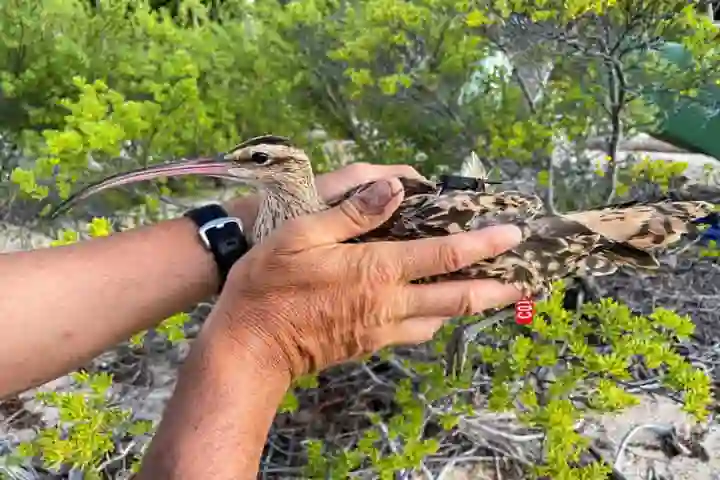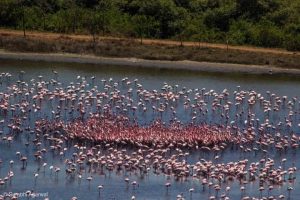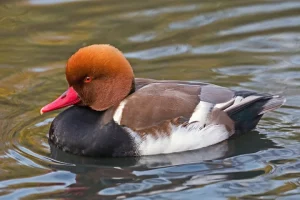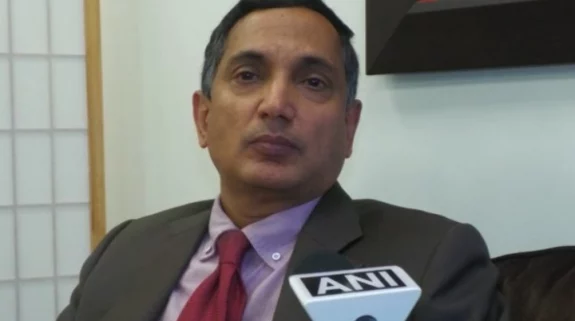Flying across thousands of miles, birds migrating from one part of the world to the other encounter all kinds of natural calamities on their way including sea storms, tsunamis, hurricanes and typhoons. Yet they survive them.
According to smithsonianmag.com, an article in Hakai Magazine states that this is what precisely five years ago struck Jerome Chardon, a French Naval Officer, while listening to a radio programme about bar-tailed godwit birds making a 14,000 kilometres journey from New Zealand and Alaska. As a rescue operations coordinator, well aware of the storms and other natural disasters in the region, he wondered if learning how these birds navigated could help avoid disasters.
Working on these lines this January France’s National Museum of Natural History (NMNH) team has started experiments to try out Chardon’s idea, funded by the French Ministry for the Armed Forces.
Led by Frederic Jiguet, NMNH’s ornithologist, the new Kivi Kuaka project, rigged 56 birds of five species with cutting-edge animal tracking technology. These birds were taken to faraway French Polynesia islands by the French navy and then tagged using ICARUS tracking technology. Through the International Space Station, these tags will send the location of these birds to reach the Earth to enable researchers to follow the route and pattern of the avian as they eat, rest and migrate, while waiting to watch how these creatures react and respond to natural disasters.
Also read: Antibiotic Resistance Finds Its Way To Brown Bears Of Sweden
The focus of the study is on the ability of the birds to hear the infrasound, which are low-frequency sounds that can’t be heard by humans but provide a clue to the birds about tsunamis and storms.
There are varied sources for infrasound — lightning strikes, jet engines, vocalizations of rhinoceroses. Tsunamis too generate infrasound, though rarely measured and these sound waves travelling faster than the waves, can help in detecting tsunami before it hits.
Regarding birds managing to sidestep storms by listening to infrasound, there is proof. In a 2014 study, scientists tracked golden-winged warblers in the central and southeastern United States and found that they undertook evacuation migration, that is they flew 1,500 kilometres to avoid tornadoes. Amazingly, they moved out 24 hours before thus proving to the scientists that they were able to detect the storm 400 kilometres away.
There is anecdotal evidence of birds dodging tsunamis from the 2004 Indian Ocean disaster. Survivors had reported that the birds had flown inland to avoid the deadly wave. This made sense according to Jiguet because those surviving would be more successful at reproducing.
Also read: Study of rhinoceros genetics will help boost their dwindling population
The Kivi Kuaka bird team, if it detects infrasound emanating from oncoming storms or tsunamis and takes alternative route, will provide details to the scientists about their movements and help in creating an early warning system, said Jiguet.
In case the birds detect and avoid storms, then Jiguet feels they could be good tsunami sentinels. Therefore, the researchers are planning to tag hundreds of birds across the Pacific to prepare for a potential tsunami. According to Jiguet: “I think if there is one wave that spreads across islands, yes, we should get data from different species at different locations to see if there are some convergent behaviours. That would definitely say it’s worth continuing to tag and to develop local systems to better analyze this.”
While commending the Kivi Kuaka research, tsunami scientist Eddie Bernard observed: “The only thing I would say is don’t overstress the tsunami warning aspect of this project.” He added that apart from detection, it is important to measure the size of the wave which is vital since most tsunamis are harmlessly small. Moreover, false alarms can lead to economic damage and erode public trust.
Bernard, as the former head of the US National Oceanic and Atmospheric Administration’s Pacific Tsunami Warning Center and Pacific Marine Environmental Laboratory, places his hope on the tsunami-warning technology he helped develop. This is already in place on the coastlines today.
The system called deep-ocean assessment and reporting of tsunamis (DART), depends on a highly sensitive pressure sensor anchored to the seafloor which passes information to a surface buoy and satellite. This system ascertains tsunami wave differences as small as a centimetre and thus helps in avoiding false alarms.
Jiguet feels even if building a bird-based tsunami early warning system fails, the project will still help scientists protect birds and also enable the French Ministry for the Armed Forces aid initiatives on biodiversity and climate change.

















